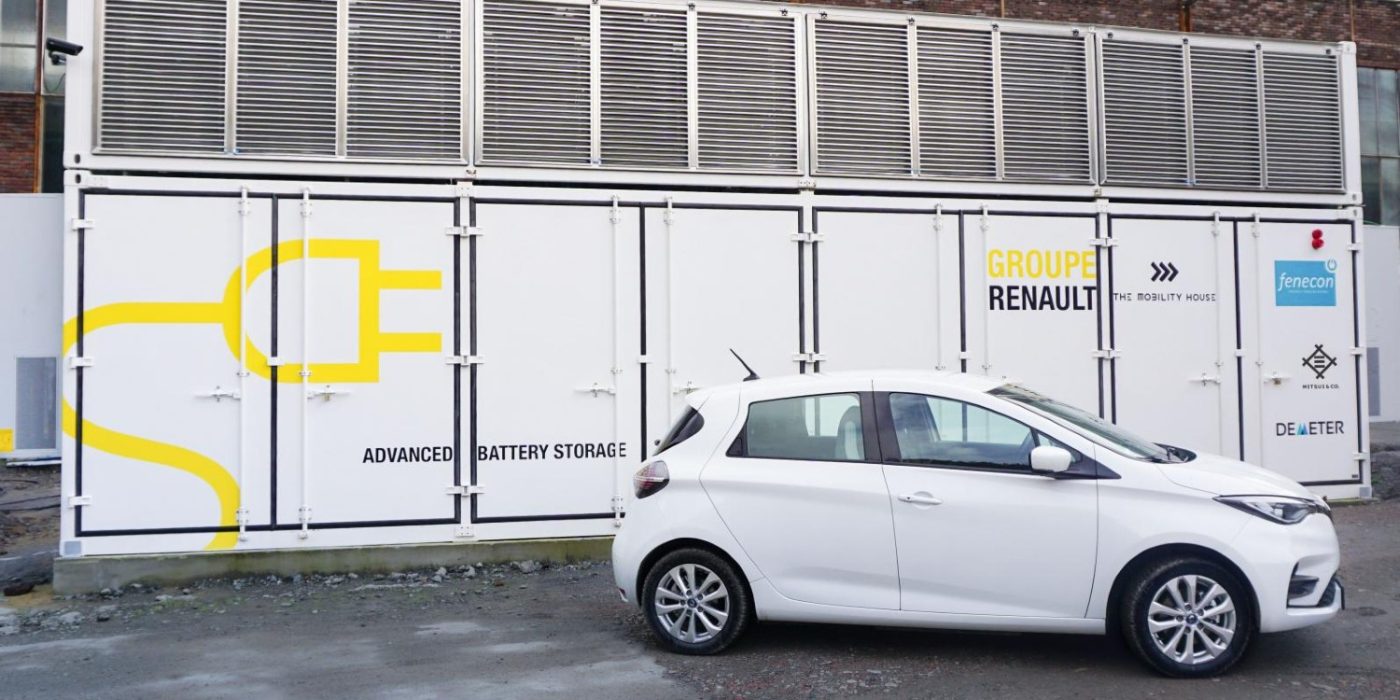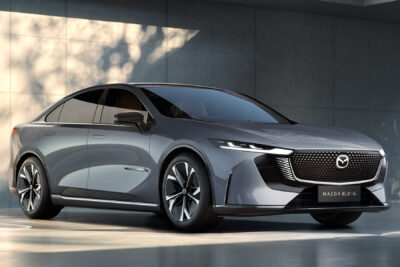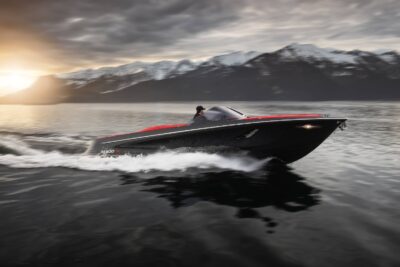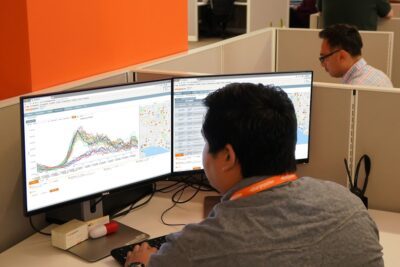Second life for a coal power plant in Germany
In a former coal-fired power plant in Elverlingsen, Germany, a new stationary battery storage system made up of of electric car batteries has been put into operation. The project was jointly developed by Renault, the technology company The Mobility House and the electricity storage system expert Fenecon.
The stationary battery storage system has a storage capacity of 3 MWh and uses 72 batteries that were previously installed in Renault Zoes, provided by project partner Renault. In the second life application, the electric car batteries are used as energy storage for the power grid. The new storage facility is part of Renault’s overarching Advanced Battery Storage project.
For the stationary storage the batteries were installed in a 40-foot container. Each battery has an inverter assigned to it only, as the 72 inverters are installed in another container that is placed on top of the battery container. According to Franz-Josef Feilmeier from integration specialist Fenecon, this has several advantages. “This means that the inverters sit in a separate thermal unit independent of the batteries,” said Feilmeier at the digital event for the commissioning. “This also means that we always have the same cable length, since the distance between the battery and its assigned inverter is always the same”. In addition, this means should one of the pairings fail, only 1/72 of the system is affected.
The challenge was not only the mechanical arrangement of the components, but also the software. Fenecon and The Mobility House developed a “rolling master-slave system”. In order to increase efficiency, not all batteries of the system are to be used equally, but the number of batteries needed for the current requirement should be minimised. To ensure that all batteries age evenly, they are replaced regularly.
While this sounds straight forward in theory, in practice there are some hurdles that the partners had to overcome on the way. “The challenge was that the battery was variable – as good as new or bulging with different states,” says Feilmeier. Furthermore, if a battery is still in the “spare parts” stage, it could be removed from the system and reinstalled in a car if necessary, as it is treated more gently by the control system.
Robert Hienz, COO at The Mobility House, is very satisfied with the solution achieved. Because the solution is so flexible (both in terms of the software and the scalable container structure), it can serve as a blueprint, not only for further projects with stationary storage, but also for Vehicle-2-Grid solutions. “From a technological point of view, the model project is a large parking lot for our control system, with many cars that simply don’t want to leave,” says Hienz. “For the control system, it makes no difference whether the battery is permanently connected in a stationary storage facility or installed in a car and only connected temporarily.”
Hienz describes the plant in Elverlingsen as a “first industrial project, but not a pilot project”. Within the framework of the Advanced Battery Storage project, the construction of a further 17 MWh has been agreed, i.e. 20 MWh in total. The turnkey solution is also to be made available to other interested parties. The partners said in a press release that “All that interested companies have to contribute is sufficient space for two 40-foot standard containers (a battery container and a transformer container) in which the 3.0 MWh system is installed on a turnkey basis, a suitable grid connection and the appropriate load profile. Optimal results are achieved by the battery storage system in industrial and commercial enterprises with a high power consumption of more than 10 GWh per year and/or with load peaks above 500 kW.”
With such a system, it should be possible to save more than 200,000 euros in electricity costs per year. On top of this, over 100,000 euros in revenue could be generated, as energy is provided on the primary control market. In addition, The Mobility House promises that the customer would not incur any costs. The financing concept is “already included, so that customers do not have to contribute anything other than sufficient space for the containers and a suitable grid connection without a building cost subsidy”.
At the Digital event, the project partners did not specify when a corresponding project would be started with batteries still installed in the vehicles. The organizers clarified that they are working towards this. “It’s very important to pay attention to sustainability in electromobility. This applies not only while driving,” says Uwe Hochgeschurtz, Head of Groupe Renault in the DACH region. “We want to help ensure that the battery makes sense after life in the car and can be used for ten to twelve more years.”
The Renault manager is relying primarily on research: “We have not yet explored everything that is possible with modern storage systems,” says Hochgeschurtz. “But one thing is certain: the electric car is the only car that can also lead to a reduction in CO2 emissions when it is stationary.”
With reporting by Sebastian Schaal, Germany.
Source: Press conference online, renault-presse.de (in German)






0 Comments